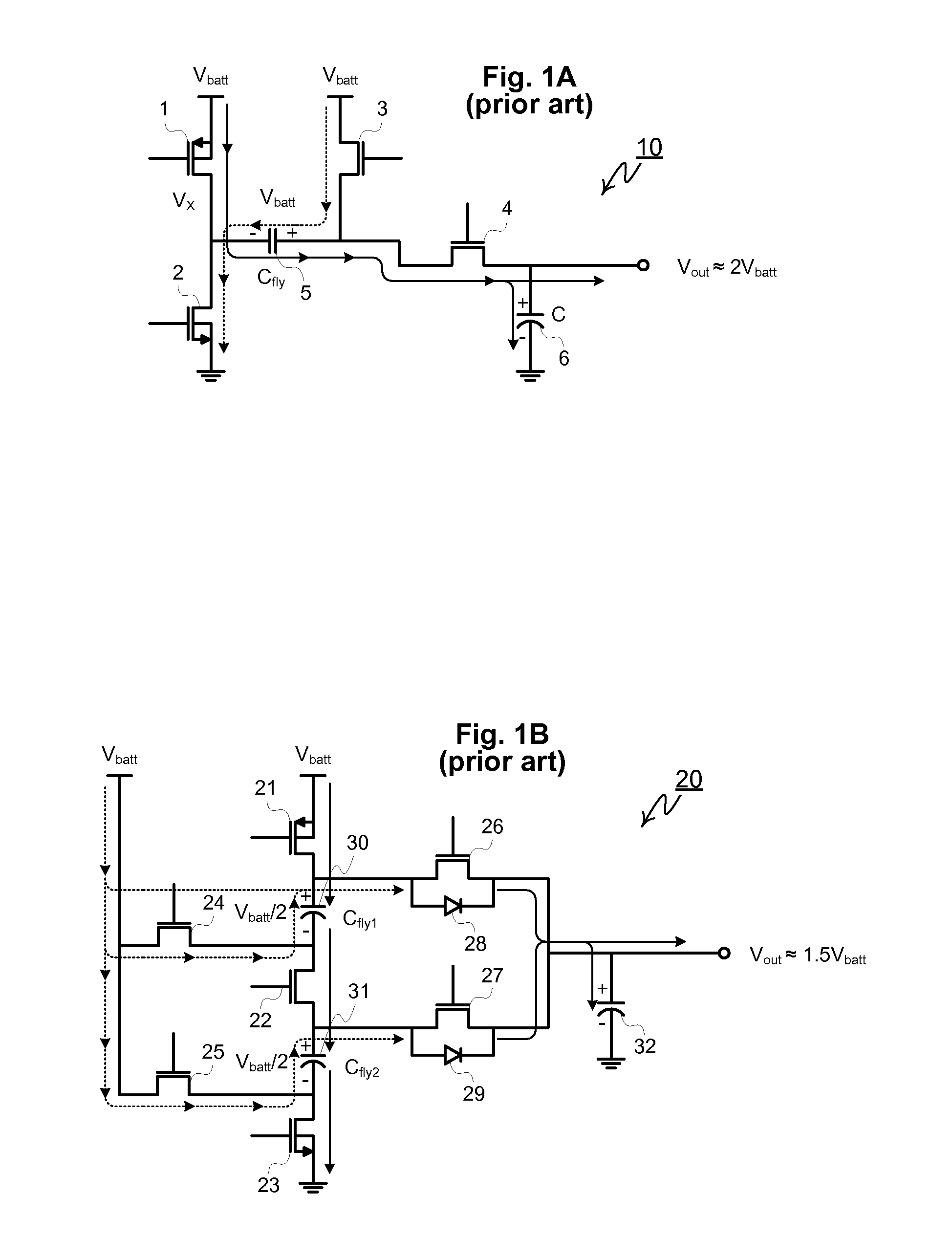Time-Multiplexed-Capacitor DC/DC Converter with Multiple Outputs
a technology of multi-capacitor and converter, which is applied in the direction of dc-dc conversion, power conversion system, instruments, etc., can solve the problems of loss of efficiency, and the voltage differential between the charge pump and the charge pump is lower
- Summary
- Abstract
- Description
- Claims
- Application Information
AI Technical Summary
Benefits of technology
Problems solved by technology
Method used
Image
Examples
Embodiment Construction
[0104]A multiple output DC-to-DC voltage converter using a new time-multiplexed-capacitor converter algorithm and related circuit topologies is herein disclosed. Unlike conventional charge pumps limited to producing a single output per charge pump, the new time-multiplexed-capacitor topology and method generates multiple voltage outputs of both positive and negative polarities from a single supply voltage or battery input. For the sake of clarity, the various embodiments of this invention are subdivided into four classes—dual polarity multiple-output converters, multiple-positive-output converters, multiple negative output converters, and re-configurable multiple-output converters.
[0105]Dual-Polarity Time-Multiplexed-Capacitor Converters: One embodiment of this invention is a time-multiplexed-capacitor converter capable of producing positive and negative output voltages simultaneously. In FIG. 3 for example, circuit 60 illustrates a time-multiplexed-capacitor dual-output converter c...
PUM
 Login to View More
Login to View More Abstract
Description
Claims
Application Information
 Login to View More
Login to View More - R&D
- Intellectual Property
- Life Sciences
- Materials
- Tech Scout
- Unparalleled Data Quality
- Higher Quality Content
- 60% Fewer Hallucinations
Browse by: Latest US Patents, China's latest patents, Technical Efficacy Thesaurus, Application Domain, Technology Topic, Popular Technical Reports.
© 2025 PatSnap. All rights reserved.Legal|Privacy policy|Modern Slavery Act Transparency Statement|Sitemap|About US| Contact US: help@patsnap.com



